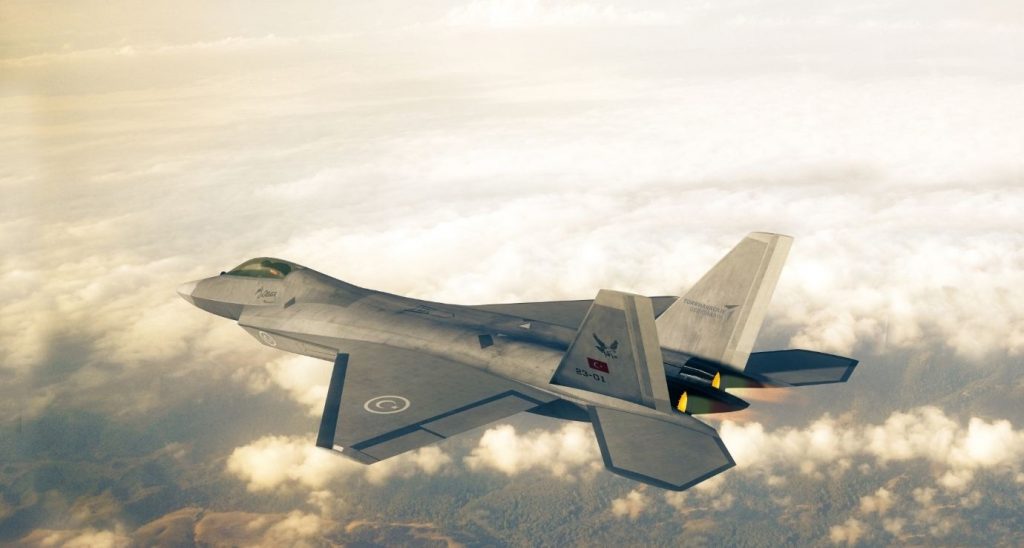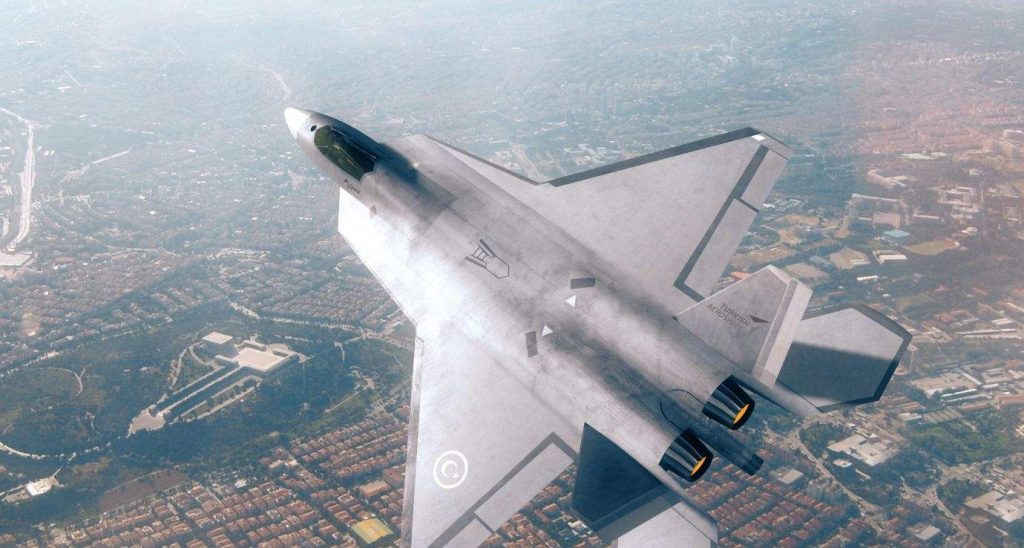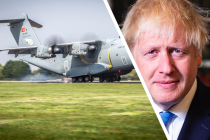Turkiye’s new combat aircraft KAAN – a fifth generation fighter jet – made its first flight on Wednesday, 21 Feb., marking an important milestone in the evolution of the country’s defence industry.
Turkish aerospace firm TUSAŞ [Türk Havacılık ve Uzay Sanayi Anonim Şirketi] shared a video of a KAAN fighter jet taking off for its maiden flight over the Turkish capital Ankara before returning to an air base nearby. The news created a huge buzz at home and abroad.
“With KAAN, our country will not only have a fifth generation fighter jet, but also technologies that few countries in the world have,” Haluk Görgün, head of Turkiye’s Defence Industries Agency (SSB), said in a post on social media platform X (formerly Twitter).
KAAN forms part of a national strategy to upgrade the Turkish Air Force (TAF) and make the country’s defence industry more self-sufficient. In 2016, Turkiye launched its TF-X project to produce a national combat aircraft. The following year, TUSAŞ and Britain’s BAE Systems inked a deal worth $125 million to develop Turkiye’s next-generation fighter jet.
Measuring 21 metres long and with a wingspan of 14 metres, KAAN is larger than an F-35, which is typically 16 metres long and has a wingspan of 11 metres. The new Turkish fighter jet comes equipped with cutting-edge technology and can carry up to eight medium and long-range missiles.
The aircraft incorporates an electronic warfare system and a 360-degree electro-optical surveillance system developed by ASELSAN, a leading Turkish military electronic systems manufacturer. KAAN also boasts supersonic strategic attack capabilities and is armed with domestically produced smart munitions for both air-to-air and air-to-ground missions.
The aim is for KAAN to replace the TAF’s old F-16 fleet, with the phase-out set to begin in the next decade. The new Turkish fighter jets are being driven by two General Electric engines, which are also used on fourth-generation Lockheed Martin F-16 jets. According to Görgün, Turkiye intends to use domestically produced engines on KAAN aircraft from 2028, after which it will start to gear up for mass production of the jets.
The home-produced fighter jets will bolster Turkiye’s current fleet of combat aircraft, which includes 157 F-16C and 86 F-16D planes. Ankara is also set to purchase 40 new F-16V fighter jets and 79 modernisation kits for its existing F-16s, with a combined sales value of $23bn (£18bn).
Ankara had set out to buy the new F-16s back in 2021, but the sale didn’t get approval from the US government, which had made the deal conditional on its NATO ally supporting Sweden’s accession into NATO. Last month, the Turkish Parliament finally ratified Sweden’s NATO membership on 25 January. Two days later, US President Joe Biden urged that the F-16 sales be approved “without delay”.
The Americans had already imposed sanctions on Turkiye’s defence sector back in 2020 after Ankara opted to buy Russia’s S-400 missile defence system. Washington also ordered that Turkiye be expelled from the F-35 stealth fighter jet programme, where it was both a manufacturer and buyer.
Commenting on the new Turkish fighter jet, Lieutenant General İsmail Hakkı Pekin, the former chief of Military Intelligence, said that once KAAN was operational the Turkish Air Force would emerge as the region’s most formidable air power. He also highlighted how KAAN has many features that are similar to the F-35, including stealth technology, but that KAAN was superior in several areas including in munitions capacity.
KAAN successfully completed its first flight. May it be good for our country!🇹🇷✈️ https://t.co/keD63Vohoa
— Turkish Aerospace (@TUSAS_EN) February 21, 2024
Alongside producing its own jets, Turkiye is also interested in buying 40 Eurofighter Typhoon jets, built by a consortium comprising Airbus, BAE Systems and Leonardo.






